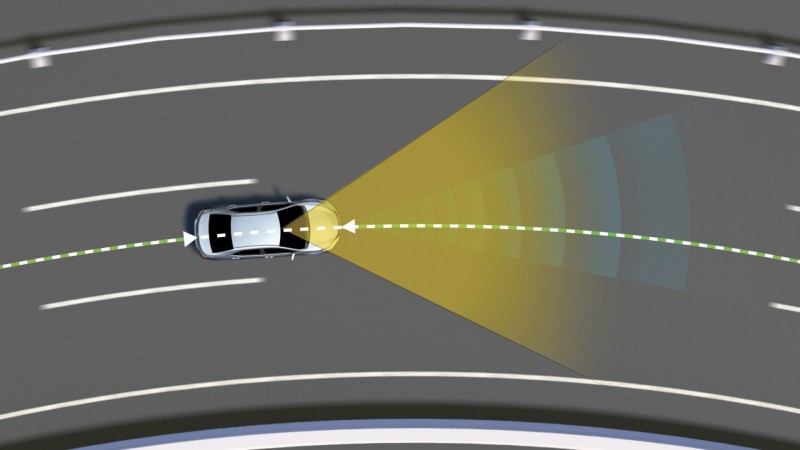
Vehicles equipped with Toyota Safety Sense reach 10 million units globally
Toyota Safety Sense is currently equipped in approximately 90 percent of Toyota passenger vehicles[2] on the Japanese, North American and European markets. At present, it has been introduced in a total of 68 countries and regions, including China, other selected Asian countries, the Middle East, and Australia.
It is anticipated that by the end of this year 3 million vehicles in Japan, 5 million cars in North America and almost 2 million units in Europe will be equipped with Toyota Safety Sense.
In real-world traffic conditions, the resultant effects of accident reduction[3] can be clearly seen, such as a reduction in rear-end collisions of approximately 70%, rising to approximately 90% in conjunction with the Intelligent Clearance Sonar (ICS).
Committed to achieving a safe mobility society, Toyota believes it is important to promote an approach which involves people, vehicles, and the traffic environment, as well as the pursuit of ‘real-world safety’ by learning from accidents and incorporating that knowledge into vehicle development.
 Earlier this year, Toyota rolled out the second generation of Toyota Safety Sense, moving one step closer to its ultimate goal of an automotive society with zero accidents.
Earlier this year, Toyota rolled out the second generation of Toyota Safety Sense, moving one step closer to its ultimate goal of an automotive society with zero accidents.
Toyota Safety Sense now includes[4] upgraded versions of:
– Pre-Collision System (PCS) to help prevent and mitigate collisions with vehicles in front, and potential collisions with pedestrians during both daytime and night-time, and cyclists during daytime;
– Adaptive Cruise Control (ACC) to help the driver to keep a safe distance from the car in front;
– Lane Departure Alert (LDA) to help prevent accidents and head-on collisions caused by leaving lanes;
– Automatic High Beam (AHB) to help ensure excellent forward visibility during night-time driving;
– Road Sign Assist (RSA) to support drivers by ensuring they always have the best possible information, even if they have, perhaps, overlooked a road sign.
A new intelligent Adaptive Cruise Control (iACC) is also available, linking the ACC with RSA. When the vehicle travels at a constant speed in accordance with the speed preset by the driver, and a speed limit sign is recognised by RSA, the driver can easily reset the vehicle speed in accordance with the new speed limit, by using the switches on the steering wheel.
In addition, advanced driving support is now available through Lane Trace Assist (LTA)[5]. Combined with ACC, the new LTA system assists the driver in steering control with gentle inputs to keep the vehicle in the centre of the lane, even on gentle highway curves.
Toyota aims to introduce the second generation Toyota Safety Sense in around 100 countries and regions, including Asia and Latin America, by 2020, with an eye toward further popularizing the active safety package.
[1] Includes Lexus brand vehicles equipped with Lexus Safety System + and Lexus Safety System + A
[2] Calculated from the orders/sales of vehicles in Japan, North America and Europe between January-September 2018
[3] Based on independent calculations performed by Toyota using accident data from the Institute for Traffic Accident Research and Data Analysis (ITARDA). Figures calculated based on traffic accident occurrence rates for Toyota Safety Sense-equipped versus non-equipped Corolla, Prius, Premio, and Allion vehicles (totaling 680,000 vehicles overall) between January 2015 and December 2017.
Rates are reduced by approximately 90% with the combination of Intelligent Clearance Sonar (Parking Support Brakes [Stationary Objects]), designed for collision avoidance and damage mitigation at ultra-low speeds.
[4] Available features depend on model and grade
[5] Vehicles equipped with LTA also support all LDA features






